– Welcome everyone to Wednesday Nite @ the Lab. I’m Tom Zinnen. I work here at the UW-Madison Biotechnology Center. I also work for the Division of Extension Wisconsin 4-H. And on behalf of those folks and our other co-organizers, PBS Wisconsin, the Wisconsin Alumni Association, and the UW-Madison Science Alliance, thanks again for coming to Wednesday Nite @ the Lab. We do this every Wednesday night, 50 times a year. Tonight, it’s my pleasure to introduce to you Maria Mora Pinzon. She’s from Venezuela and got her medical degree from the Central University of Venezuela. Then she came to Rush University in Chicago to get a master’s degree in clinical research, and came to UW-Madison to do her residency in preventive medicine and public health. She is a member of the Department of Family Medicine and Community Health and the Wisconsin Alzheimer’s Institute.
Tonight, she’s going to speak with us about barriers to diagnosing Alzheimer’s disease in Latinx individuals, more than a language issue. Please join me in welcoming Maria Mora Pinzon to Wednesday Nite @ the Lab.
– Thank you so much for that introduction. I’m very happy to be here today, and I hope that we have a good time. So first things first, who am I? I’m a preventive medicine physician. I work as a research fellow with the Department of Family Medicine and Community Health at the University of Wisconsin, and as a scientist with the Wisconsin Alzheimer’s Institute. This might be the first time that you heard about preventative medicine as a specialty. We are a specialty that has been around since the ’50s, and we take care of the populations and the communities. We use tools from epidemiology, research, public health, quality improvement to make sure that everybody has access to the healthcare resources that they need, but also that they have the opportunity to have long and healthy lives. Now let’s talk about the topic of the day and a little bit of introduction.
Over the next hour, you might hear me say Alzheimer’s disease and related dementias. And you might be thinking, “Okay, so dementia is the same as Alzheimer’s, “are they always together? What’s the deal with these words?” In general, we refer to dementia as a cluster of symptoms, symptoms that affect memory, that affect thinking, that affect reasoning, and that affect daily life. There may be many, many causes of dementia, and Alzheimer’s is one of them. Alzheimer’s disease is the most common cause of dementia. It’s one disease that affects the brain, and it can be diagnosed through different methods. But in general, we see that it’s more common in older adults. Some of the signs and symptoms that you might see on Alzheimer’s disease might be memory loss, getting lost when you go out, having changes in mood and behavior, people that might be looking a little stubborn now, people that are forgetting appointments and conversations, and that these things start affecting their ability to connect with others. In general, Latinos, when they hear the word Alzheimer’s, think about sadness. Why? Because for Latinos, Alzheimer’s disease relates to losing oneself. And this quote is something that over the last year I’ve been talking to people, asking them, what do they think is Alzheimer’s? What do they think is dementia? What comes to their minds when we’re talking about these topics? And in general, they reflect that it’s very sad.
And when somebody has Alzheimer’s disease, they might still be here, but they are not really connecting with others. And this quote that I have, it reflects very well of what I mean by what people think. “I would say that Alzheimer’s disease “is much more worse than dementia. “People can still be talking and walking, “but that’s in dementia. “But if they have Alzheimer’s, they’re not really here, everything is lost. ” And that’s one of the things that’s most common hearing from, and I think this across races and ethnicities, people see Alzheimer’s disease as that moment in time when you cannot connect and that your body’s here, but you mind is somewhere else. And it’s worrisome because the number of people with Alzheimer’s disease is going up. We know that over the next 40 years, the number is going to triple. And this affects, again, everybody, all races and all ethnicities. However, we know that Latinos are at a higher risk of developing Alzheimer’s disease.
Specifically, about 12% of Latinos will develop Alzheimer’s disease. And this number is higher than what we see for non-Hispanic whites. But then you might be hearing the word Latino, Hispanic, like, are they the same? Are they different? And I would like to take a few minutes to talk about these terms, because it will help us to talk about it in the future. And first, the census define Hispanic as “A country of origin or country of someone’s heritage. Latinos, Hispanics can be from any race. ” We are white, Black, Asian, Native American. Hispanic or Latino is an ethnicity. And these terms might seem like they are the same, but they are slightly different. For example, Hispanic, we refer to those that speak Spanish, or that are coming from countries where Spanish is their primary language. When we refer to Latinos, we are referring to people whose heritage is coming from countries in Latin America.
So in this graph, we see who is Hispanic and who is Latino. In the center, you can see that people for certain countries can be both. People from Argentina, Chile, Colombia, Peru, Puerto Rico, Ecuador, Venezuela, we are both Hispanic and Latino. But then people from Spain is only Hispanic. And people from Brazil, Haiti, French Guiana, Martinique, they are considered Latinos. But they are not Hispanic, because their primary language is different than Spanish. They speak Portuguese, French, and many other Native languages that we have. So with that in mind, which term should you use, what’s the best term? Well, it depends. Actually, most people will prefer to be referred as from the country of origin or their country of heritage, rather than using that term that lumps us all together. If you ask people, “Okay, but we need to use one of those.
“Either it’s Hispanic or is it Latino? Which one do you prefer?” Most people have no preference. Although some group of people prefer Hispanic, which is the term that has been around since the ’70s, and a smaller group prefers Latino. And you maybe have heard this one before as Latinx, which is a gender neutral term. Spanish is a language that every word is gendered. Every word might be female or male. So we have Latino referring to males, we have Latinas referring to females, and now this new term has been around for the last few years and was created by Latinx activists to refer as gender neutral. It’s a very new term. And as you can see, you might have heard of the controversy, it’s still a lot of people is not using it. But language changes, and I just wanted to make sure that you knew if you see this term, what it means. But now, let’s go to the point of this presentation, Hispanic Americans and Latino Americans and their relationship with Alzheimer’s disease.
Who are the Hispanic Americans? According to the census, 19% of the population in the United States is Latino or Hispanic. And I want to make that point very, very clear. 65% of them were born here. 65% of Hispanic and Latinos were born in the U. S. or one of its territories, that includes Puerto Rico. 30% of the Latinos living in the U. S. are naturalized citizens. And 22% are non-citizens, but that includes a lot of people.
That includes green card holders, that includes people with visas, asylum seekers, so that’s a very mixed group and not all of them have the same characteristics. Now when we talk about Latinos in Wisconsin, I have heard things like, “Are you from Wisconsin? Are there even Latinos there?” To my response is, “Yes, very few of us. ” We are only 7% of the population of Wisconsin, but that’s a number that’s been growing up. And we’ve been here in Wisconsin for a long time. And you might have seen some other University Place episodes, when we talk about the Latinos and the growing Latino presence in Wisconsin, so I will not go too deep into that. You might be wondering how I ended up here. I came for residency. We will talk about later on how to use social media for disseminating messages and why that’s important. Well, I also came here because of that tweet that you see in the screen right now. The University of Wisconsin, the School of Medicine and Public Health published this tweet advertising the new Preventive Medicine program.
I saw it, I came, the rest is history. But I’m not the only person that moved to Wisconsin. This graph is telling us that the number of Latinos in Wisconsin is growing. Since the 1990s, you can see that the darker colors, the blue dark, indicates that most of the Latinos are in the southeastern part of the state. But as the time has come on, Latinos have gone all around the state, and this number is only going to increase. But then coming back to Alzheimer’s disease, we know that Alzheimer’s is most frequent in older adults, or people that’s 65 years and older. Only 2% of the people 65 years and older is Latino in the state of Wisconsin. But the important thing is that they are the fastest growing group. Over the last 20 years, the number of Hispanic Latinos, older adults in the state, has grown in almost a 300%. That we can see in this graph, that’s higher than the 51% growth that have been seen for non-Hispanic whites, or the 56% growth that have been seen for Black or African Americans in the state.
And why this is important when we talk about Alzheimer’s disease? Because this change in demographic has been happening all around the country. And we have more Latino older adults, and we also have more risk of developing Alzheimer’s. That means that over the next few years, the number of Latinos developing Alzheimer’s disease is just going up. And we expect that by 2060, it’s going to be over 900% more Latinos with Alzheimer’s disease. So we need to be prepared for that. And one of the first things is what are the risk factors? Why do Latinos have more risk of Alzheimer’s? And it’s not about genetics. It’s not about that we have a gene that makes us sicker. We know from multiple studies that there are multiple factors that affect Alzheimer’s disease, including hearing loss, hypertension, high blood sugar, physical inactivity, brain injuries. All of these factors account for 40% of the causes of Alzheimer’s disease, and some of them are very frequent among Latino communities. We have higher degree of uncontrolled high blood pressure, higher degree of uncontrolled high blood sugar, more likely to be obese, and more likely to have physical inactivity.
And all of these factors together also increase our risk of having Alzheimer’s disease. We also are less likely to have protective factors such as high educational achievement. And in this graph, I have a couple of points highlighted. Among all Americans 25 years and older, about 40% of them have a high school degree or less. But that number for Latinos is almost 60%. So this privilege and this benefit of going to college or having more technical education is less likely to happen in Latinos, which affect the risk of having Alzheimer’s. However, the risk of Alzheimer’s is not the same for all Latinos. And this is where the definitions that I gave you before are important. Depending of their country of origin, we are seeing different results and different risk factors, as this couple studies that are mentioned in here are telling us. One study done in California with Mexican Americans, they only have about a 0.
8% annual incidence. But then when we compare it with other studies that have been done in New York with Caribbean Americans, that’s people from the Dominican Republic, Puerto Rico, and other of the Caribbean islands, what we can see is that they have shown a higher risk, 2 to 5% annual incidence. So this difference is what tells us that, “Hey, there’s a lot that we don’t know about the risk and why the risk factors. ” But usually in most of the research studies, we don’t have enough Latinos to be able to differentiate. But then, we know that Alzheimer’s disease affects everybody, and we know that Alzheimer’s disease affects people differently. But what we know also is that not only Latinos have higher risk of Alzheimer’s, but also we are less likely to get a diagnosis, we are less likely to receive treatment. Most of our caregivers are unpaid caregivers, family members that stay with our older adults, taking care of them at home. They tend to live longer and they have the disease for more time. In general, if the average age that somebody develops Alzheimer’s disease is in the 70s, Latinos will start showing up symptoms seven years earlier. And all of these things are indicative of limited access to healthcare services, and this is where my research is.
And let’s first have a definition of access. Access is defined as, “The timely use of personal health services and all the factors that affects their use. ” Just because something is there doesn’t mean that it’s accessible. Just because we have the technology to go to the moon doesn’t mean that everybody will be able to go. Same way is with access. And what are the factors that affect access to this diagnosis or these services? Well, we have many factors, but I like to classify them in three groups: person factors, organization factors, and context. Person factors, do you have insurance? Do you have insurance that covers more than emergency situations? What about, do you think you need to go to the doctor in the first place? “This is fine, it’s nothing, it’s just stress. I just need to sleep it off today. ” And also your beliefs or knowledge. If you don’t even know that this is excess, how could you know that you need to go to the doctor for it? In the organizational factors, we’re talking about the things at the health systems level, for example.
Does the health system in your neighborhood accepts all the insurance, or is it the insurance that you have? Do they have the staff that’s trained to diagnose dementia? And even more, do they have a staff that’s trained to diagnose dementia in Latinos or in a different language that’s not Spanish? What about the office hours? We know that sometimes it’s hard to find a time to go to an appointment because, “Oh, well we only have availability in six months from 8:00 to 5:00. ” And that creates some complications when you are looking to seek care. But then there are other factors that are cultural or that they are at the level of the community, like stigma or cultural norms. Do we talk about Alzheimer’s disease in hush hush, or do we talk about Alzheimer’s disease without fear that people’s going to think less of us? Are there hospitals, organizations, doctors around that could take care of you? All of these factors affect when people go and seek care. But according to the Behavioral Risk Factor Surveillance survey, 39% of the Latinos that have experienced a memory problem over the last year experienced one or more barriers. 40% of Latinos have a difficult time getting access. And the factors are mixed, but the most common ones, they don’t have insurance. They are afraid of cost. And you know what I’m talking about, it’s the copays, right, or the medication, the things that are not included by the insurance. “I couldn’t get an appointment soon enough,” or “The wait to see a doctor was too long.
” And this one, I think I had to think a little bit when I saw it the first time. But then if you have an appointment at 8:00 AM and your doctor is running late, your appointment doesn’t start until 10. If you had a family member waiting for you, or if you had another appointment, or you’re working still, all of these things might make that even though you have an appointment, you might not keep it if you need to be somewhere else. And also, didn’t have transportation. And this is very common for everybody. “Where do I need to seek care? How far do I have to drive?” It’s not the same, “Oh, I just need to walk two blocks “to get to the doctor,” or “I need to drive two hours to get the care that I need. ” And there’s other factors that affect, even if you get an appointment, there are other factors that affect how and when you get a diagnosis for Alzheimer’s disease. These diagnosing difficulties can be, for example, the tests that we use have not been evaluated in Hispanic or Latinx populations. And I’ll give you an example of what I mean about this. If I asked you to draw a house, you might draw something like we have here.
A door, two windows, a ceiling, even a tree. And that looks like the houses that we see all around the state. But then if I asked somebody to draw a house and they show me a house over the water, I might start thinking, “I think they’re confused or they’re imagining things. ” But what if this person is from a place where that’s normal? And that’s a point what I mean when the tests have not been evaluated in Hispanic or Latino communities. What’s normal? The tests, we define what’s normal based on everybody. We evaluate 100 people and say, “This is what’s normal, this is the most common one. ” And we need a lot of Latinos to participate in research studies to be able to define what’s normal. Sometimes these tests are not available in the preferred language. And here I want to start by saying 72% of Latinos are fluent in English. That’s a large number, a very large number.
But among those that are 65 years and older, that number is lower, it’s only 43%. Now imagine if you speak some English, but you cannot find the word that you’re looking for. You know the word in Spanish, but you don’t know the word in English. How does that test is going to count my response? Okay, bad, wrong? And what about those that don’t speak any English? We need the test to be available in the language of the preference. And as I mentioned before, this goes beyond Spanish. We have Native languages. We have French, French Creole, we have Portuguese, there are many options. And if the test is not available in their preferred language, we cannot do a diagnosis. Also, sometimes even though they might speak a language that we have the test, they might use words that are not common, and I’d like to give you another example here. Let’s say that you want to tell somebody to do some exercises for the calf, for the leg muscle, and then you go Google.
And then, okay, the word is pantorilla in Spanish. Okay, let’s use that word. You say that to somebody that speaks Spanish and they’re like, “Nope, I don’t know what you’re talking about. ” Maybe they use a different word like chamorro, as is used in Mexico. Or maybe they say gemelos, as is used in Panama. Or maybe they say batata, as they use in Venezuela. I, as a doctor, I sometimes go and Google these words to see, can I figure out what they’re meaning? But then many times, there’s confusion and things get lost in translation. And, for example, batata means sweet potato. So you might be confused if you’re talking about the muscle and exercise, and somebody is answering you about they have pain in their sweet potato. You can imagine how difficult it gets when you’re trying to assess if somebody has a problem about confusion.
Now let’s go a little further. Let’s say you got a diagnosis. You go to your appointment. There’s a staff that’s trying to treat you, and you’re going to be seen. Okay, I’m almost ready. 40% of Latinos. . . 44% of Latinos do not ask the doctors about memory problems. 44%, only 44% will discuss.
So we’re talking about 56% will not ask a doctor about their problems. The reasons for why are many. Some of them don’t want to ask. And this slide that I’m showing are things that I have heard. “If this were important, they will ask me about it,” and I deal with this with my mom too. When my mom goes to the doctor and the doctor asks, “So how you doing?” And she say, “Fine. ” Like, “Mom, tell him about that thing. ” She tells me, “That’s nothing. If that’s important, the doctor will ask me about it. ” What about, we know that appointments are short and there are so many things to talk about.
So sometimes I have heard, “I’ll ask next time. “There’s other things to ask, I don’t wanna bother. Doctor’s already running late. ” Other things that I have heard, and this one is very, very painful for me to hear and even to say. When people say, “The doctor, when I ask things, looks annoyed. I don’t wanna ask anything. ” And that means that people is not feeling comfortable asking the doctors about things. Other things might be that they might think that’s normal. And I have heard these many, many times, “I’m just forgetting some things, that’s normal, I’m just getting old. ” At least part of getting the message across that it’s not normal.
Forgetting things and changes in your behavior is not normal. And as part of that, we need to have that safety to have those conversations. Some Latinos are afraid of getting that diagnosis. “I just don’t wanna know. ” And they might even say it in that appointment. “Doctor, if this is Alzheimer’s, please don’t tell me. ” Many don’t know who to ask or when to ask. And I’ve been doing, in all of my interviews, I think I heard a lot of everybody thinks that it’s important to talk to a doctor about this, but many don’t know when is the right time. And many try many things before bringing that concern to the doctor. They might try notes, Post-Its, reminders in their cell phone, reminders on the phone call to make sure that they don’t forget things.
They might even say and like this quote, “Just monitor it over a month, see how things go and see if you need to get care. ” I think everybody agrees that it’s important to talk to the doctor, but one of the things that makes all of this more difficult is that there’s very few Latinos, or Hispanic and Latinos, that are in the healthcare profession. Just to give you a little snapshot of this, 19% of the population is Hispanic or Latino, but we represent only 8% of the nurses and 2%, if we talk about our registered nurses, and 6% of physicians, 6%. And it goes beyond language. When somebody is being taken care of by a provider that looks like them, they are more likely to receive preventive care, they are more likely to bring up new concerns, and they’re more likely to continue follow-up. How important is this? This is extremely important, because many times in dementia and Alzheimer’s, we cannot get a diagnosis in one appointment. We might need two, three, even four appointments over a few months to see how things are progressing, try a few treatments, rule out other conditions, before we get to a diagnosis. So it’s important that somebody feels comfortable enough to come to the doctor and stick with it. And that’s one of the things that is making all of this a little harder. But if we go even farther, for those that are able to get a diagnosis, sometimes information is not that easy to comprehend and something that we know that it’s more the language.
It’s also about, for example, reading level. Usually the recommendation is that most of the information to be easily absorbed has to be a third grade reading level. Most of information on Alzheimer’s is very complex. We know that we need more pictures and videos and attractive things to see to transmit those messages. But many of the resources are just words. And the last factor, information needs to be bilingual. Even though somebody can speak Spanish, that doesn’t mean that they can read in Spanish, and this isn’t all the levels. Also, many caregivers might speak a language, but might read in another one. So we see that when we have older adults and we’re giving that information, it’s always good to have information in both languages, their preferred languages and English. So that way, other family members, friends, daughters, grandsons, granddaughters, cousins, can take a look at the information also in their preferred language and help to navigate and understand what’s happening.
Barriers to the diagnosis. Barriers go beyond the diagnosis. Latinos are more likely to have unpaid caregivers. And, first of all, we don’t use the word caregiver. Most of the time we prefer to say, “I’m just in charge of my mom’s things. “I’m taking care of my mom. My mom lives with me. ” That type of words we use. We don’t say we are caregivers. We may say, “I’m doing, I’m being, “I’m accomplishing the things as a daughter.
” But who are the most likely caregivers? And several stories have telling us most likely to be female, and this relates to a culture. Usually it’s female and the youngest daughter that takes that responsibility. Many of these caregivers are young, 40s, 50s, and half of them are taking also care of kids. So caregiving becomes a multigenerational affair. And it’s not unheard of let’s say to a teenager, “I’m going to the market, take care of Grandma, take care of Grandpa, I’ll be back. ” And we have heard from many teenagers and children that they have responsibilities also in the caregiving process, and many of them are not prepared. Reasons why we have so many unpaid caregivers. Well, many people is not aware of the resources. We know that there are respite services, adult daycare centers, nursing homes, memory units, but many don’t know that those things exist. Many know that those things exist, but they are not able to afford them.
They are very expensive or the insurance might not cover them. Sometimes even if they know they exist and they can afford it, the resources might not be available in the language of preference, and it becomes an issue. If my mom only speaks Spanish, I cannot just have somebody that cannot communicate with her and cannot say to her what she wants or what she needs in her language. But also cultural preferences, and I have heard this one a lot, shame if you have somebody else take care of your family member, “Shame on you. ” And a couple of people in my conversations have told me, “It’s very sad. “It’s very sad when somebody just place their mother, “their father, their grandfather in a nursing home, “they are all alone. That’s very sad. ” So it becomes more than just a disease. It’s also the sense that somebody’s avoiding their culture by not taking care of their family member. And all of these things are just the tip of the iceberg.
There’s many things that we know, there’s many things that we don’t know, but we know that we need to do something. And what can we do about this? Well, you can use trusted sources to increase awareness. And during the pandemic, I’ve been working a lot on this aspect, on how to distribute information to people. Usually, we could go to a health fair, or the supermarket, or church, and try to give presentations and talk, and meet the people where they are. But with the pandemic, everybody’s at home, we are isolated. How do we get information across? Many, many organizations establish new social media channels on new ways, new videos. People trust people from their community. And they are looking for information that they can trust and they can relate. And in that sense, social media can be a very powerful tool. With support of the Wisconsin Partnership Program and partnering with different community organizations, such as the Latino Health Council, we’ve been working on developing these messages.
How do we create trusted messages for social media that people can share? The first thing I can tell you is more than language. This information comes from, this is a figure from the CDC. It’s in Spanish, it’s telling us about social distancing. We shared it a couple of times. Most people did not see it. The information needs to be adapted and make it culturally relevant. That means connecting with the culture. And some work that’s been done from some of my students is, for example, these videos by Lizbeth Solorzano, that she could tell us about how to do chilaquiles verdes. And in that video, she connects on why it’s important to stay safe during the coronavirus pandemic and a few activities that you can do from home and stay entertained. My other student, Ashley Benitez, created this wonderful Halloween picture.
It’s not only about the Spanish language, it’s about the colors, and making it attractive and connecting, you know, this is important. And the last example is Dia de los Muertos flyer, and you can see that it’s in English. So again, it’s not the language, it’s connecting with the language to our culture and making sure that people feel connected to the information. That’s what creates a message and allows to increase awareness and transmit information. And I’ll give you another example of how powerful those connections are. We shared a few of. . . Through the partnership with the Latino Health Council, we have been sharing information about the coronavirus. And I’ll give you a few examples to show you what works and what doesn’t.
First, we shared this link about the vaccine and where you could get the vaccine. There are some engagements. Then similar information, but with a picture of a kid. Cute kid, he looks very nice, still about the same number of engagements and people saw it. Okay, what about if we have a doctor that people trust sharing that information, but he is not from here? In that case, we had some engagements, more than before, and people like it. People shared information, Dr. Armando De Alba, he’s in Nebraska, and he was sharing very good information online. Okay, now next, what about if we have a superstar? This is Dr. Juan Rivera. He is a physician that’s Univision on the Spanish speaking networks, and he is very famous.
So we shared one of his videos when he’s telling us about the vaccine, and how he feel, and that he was feeling fine after taking the vaccine. You see that we have a little bit of engagement, but not that much. The most powerful message that we have had is our own community members. These are the people that lives here, that works here, that people know. And that’s one of the things that we know help us to increase the awareness of any topic, not only the coronavirus. But also we need to be in different medias and in different channels. And it’s not once and done, it’s about getting messages in the radio, getting messages in movies. And the movie Coco is one of the few movies that shows Alzheimer’s or dementia in Latinos. Other Netflix movies, news articles, news presses, making sure that information is available in websites in Spanish and it’s easy to understand. But that’s just, again, the tip of the iceberg.
We know that we need to prepare the healthcare workforce to be prepared, because it’s going to be more and more of us with Alzheimer’s disease over the next few years. And remember this graph? Latinos are 19% of the population, but only 6% of the doctors. I’m here, this little number. And to be specific, Latinas, we are 3% of doctors, 2% of medical school faculty, and 3% of the medical school students. And you cannot be what you cannot see, so how do we encourage younger generations to come to the healthcare field? One of the initiatives that we’re doing is this work that I’m doing with #LatinasinMedicine. It’s a Twitter community that started by Briana Ruz Christophers, an MD, PhD student in New York, Dr. Narjust Duma is a cancer doctor, a lung cancer doctor, she’s at Dana-Farber at the Harvard Medical School, and myself. And we started sharing these messages of, what are Latinas doing in healthcare? This includes people from nursing, psychologists, neuropsychologists, physician assistants, doctors, medical students, pre-med students. Overall, we have seen that creating this platform incentivizes a lot of people to create connections, but also to advance the science that we have. People feel empowered to help, to go and do something new.
And this quote reflects a lot of what the community means to us, “Our network of #LatinasinMedicine “proudly celebrates our heritage, “rejoices in everybody’s triumphs, and provides unconditional support. ” Because Alzheimer’s disease and dementia is a very complex issue, and there’s still many things that we don’t know. But particularly here in Wisconsin, we are in a great place to learn more about it. The work has been done by the Alzheimer’s Disease Research Center, by the Wisconsin Alzheimer’s Institute, even by the Wisconsin Department of Health Services, all of them are working very hard to get you the information that you need about Alzheimer’s disease, the resources that you need. If you want to know, for example, how to get a diagnosis, you can check in the Wisconsin Alzheimer’s Institute website all the clinics around the state that have the resources and the staff available to give you a diagnosis. Through the Aging and Disability Centers around the state, there’s the Dementia Care Specialist program, people that’s also there to help you navigate this world that can be very complex, because Alzheimer’s affects everybody, no matter their race or ethnicity. And almost to finish, it’s important that we learn more and do more. One of the easiest things that I like to tell my patients and everyone in my presentations is that what’s good for the heart is good for the brain. That means that the things that you do to take care of yourself, exercising, eating healthy, controlling your high blood pressure, all of those things help your heart, but also is helping your brain and helping you to reduce the risk of having memory problems. Thank you so much for seeing my presentation today.
I hope you learned something new. I hope I gave you a couple of ideas of what’s coming down the pipeline, but also why things are important. If you have any questions, feel free to go to the websites that I mentioned. There’s a lot of information for you there. Thank you.
Search University Place Episodes
Related Stories from PBS Wisconsin's Blog

Donate to sign up. Activate and sign in to Passport. It's that easy to help PBS Wisconsin serve your community through media that educates, inspires, and entertains.
Make your membership gift today
Only for new users: Activate Passport using your code or email address
Already a member?
Look up my account
Need some help? Go to FAQ or visit PBS Passport Help
Need help accessing PBS Wisconsin anywhere?

Online Access | Platform & Device Access | Cable or Satellite Access | Over-The-Air Access
Visit Access Guide
Need help accessing PBS Wisconsin anywhere?

Visit Our
Live TV Access Guide
Online AccessPlatform & Device Access
Cable or Satellite Access
Over-The-Air Access
Visit Access Guide
 Passport
Passport








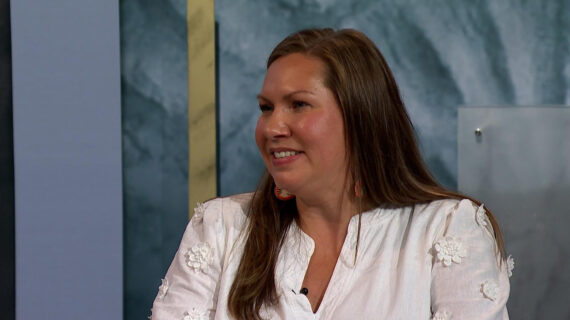
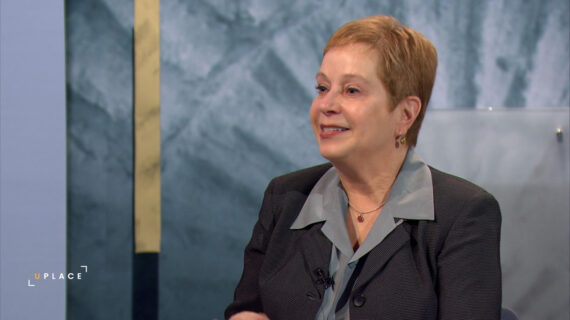
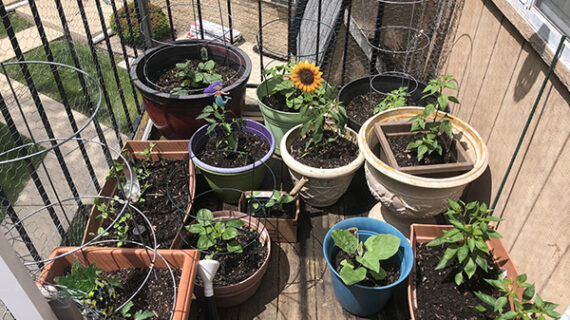
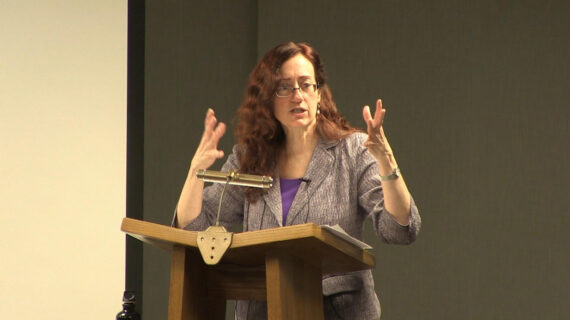
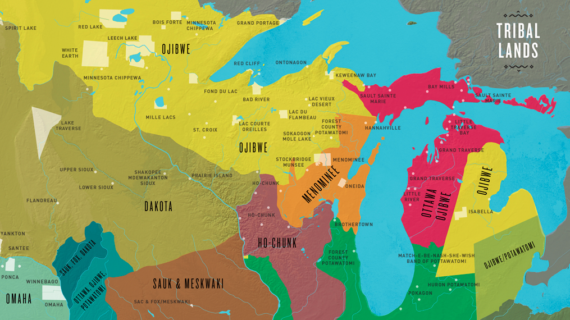


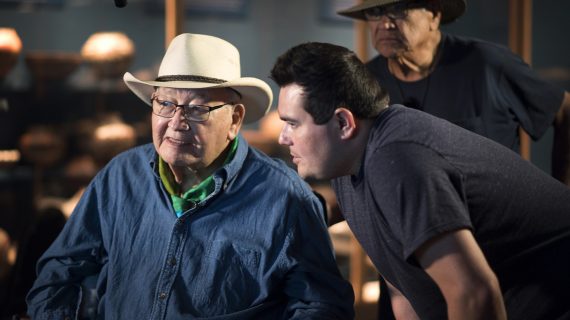


Follow Us